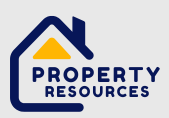Property Resources Management: 5 Essential Tips for Success
Are you struggling to manage your property assets effectively? Property resources management effectively is key to maximizing the return on your real estate investments. This guide provides five key recommendations to help you property resources management more efficiently and ensure success, whether you’re responsible for home resource property management or community assets.

What is Property Resources Management?
Property resources management is the strategic management of real estate and other assets to maximize value and retain them for a long time. It includes property management duties and responsibilities, such as upkeep, tenant relations, and financial oversight. It also encompasses broader concepts of resource management, such as maximising the utilisation of shared resources. Property resource management typically focuses on individually or jointly owned real estate rather than common property resources such as community forests or water bodies.
Understanding the Concept of Resource Management
In this case, resource management involves efficiently assigning and maintaining resources such as buildings, property, or facilities to meet the demands of an organization or community. Investopedia states that property management encompasses controlling real estate operations, such as leasing and maintenance, which are crucial aspects of managing property resources.
The Property and Resources Management for Educators syllabus also covers key concepts in asset allocation, sustainable resource use, and financial planning tailored for academic institutions.
5 Essential Tips for Effective Property Resources Management
1. Prioritize Clear Communication
For property resources management to work, there needs to be clear communication among tenants, owners, and other people involved. Clear communication prevents misconceptions and fosters confidence, whether you’re addressing complaints about resource property management or coordinating with a resource property management team.
Clients consistently praise Resource Property Management in reviews for their efficient maintenance, transparent communication, and reliable tenant services.
2. Leverage Technology for Efficiency
To make chores easier, modern property resources management utilize solutions like Resource Property Management Vantaca and Resource Property Management login portals. Resource property management payment portal solutions are a game-changer for efficiency, as they simplify the process of collecting rent, handling maintenance requests, and reporting issues.
3. Understand Property Management Duties and Responsibilities
It’s essential to understand property management duties and responsibilities. It includes checking in tenants, managing leases, and maintaining the property in good condition. A property resources management course or property resources management PDF can be beneficial for individuals new to the field. For more information, refer to our guide on the basics of property management.
4. Address Common Property Resources Thoughtfully
When managing common property resources, such as amenities in a condo complex, ensure that everyone has equal access and that they are adequately maintained. Community pools and parking lots are examples of common property resources. These need to be managed carefully to prevent excessive use or potential problems.
5. Stay Informed About Legal and Industry Trends
By staying up to date on legal regulations and industry standards, you can anticipate and address potential issues, such as a possible Resource Property Management lawsuit. Finding out who owns Resource Property Management or reading evaluations of the Resource Management company can also help you choose trustworthy partners for real property management resources.
Overcoming Challenges in Property Resources Management
There can be problems, such as resource property management complaints or disagreements over shared resources. To address the issues, maintain open lines of communication and utilize tools like Resource Property Management Vantaca to ensure clarity. Regularly review resource property management practices to ensure they meet the needs of both the community and the owner.
Conclusion:
Effective property resources management transforms properties into valuable, long-term assets. You can excel in this sector if you utilize technology, understand your property management roles and responsibilities, and effectively manage shared property resources. These suggestions can help you succeed whether you’re looking at home resource property management or a property resources management school. Today is the day to start making your property resources management plan better!
For inquiries about resource property management, please contact our office at the designated phone number provided on our website.
Frequently Asked Questions (FAQs)
1. What are common property resources?
Answer:
Common property resources (CPRs) are resources that everyone in a community can access, whether they are natural or artificial. No one owns them. To prevent these resources from being overused, they are controlled together. Some examples are public woods, grazing pastures, fisheries, and irrigation systems.
2. What does property management mean?
Answer:
Property management is the job of running, managing, and maintaining real estate properties for their owners. It includes tasks such as checking out tenants, collecting rent, maintaining the property, enforcing leases, and preparing financial reports. Property managers serve as the intermediaries between landlords and tenants. They are sure that everything runs smoothly and the property is worth as much as possible.
3. What is the concept of resource management?
Answer:
Resource management is the strategic and long-term planning, distribution, and utilization of resources (natural, human, or economic) to meet present and future needs. It has plans to protect resources, share them fairly, and reduce waste. Effective resource management ensures that resources are available for an extended period and prevents them from running out or deteriorating.
4. Which is an example of a common property resource?
Answer: A community fishing lake is an example of a common property resource. Since all local fishermen can use it, yet no one owns it, its use needs to be controlled to prevent overfishing and ensure its sustainability. The most common examples are shared pasturelands, groundwater basins, and public parks
